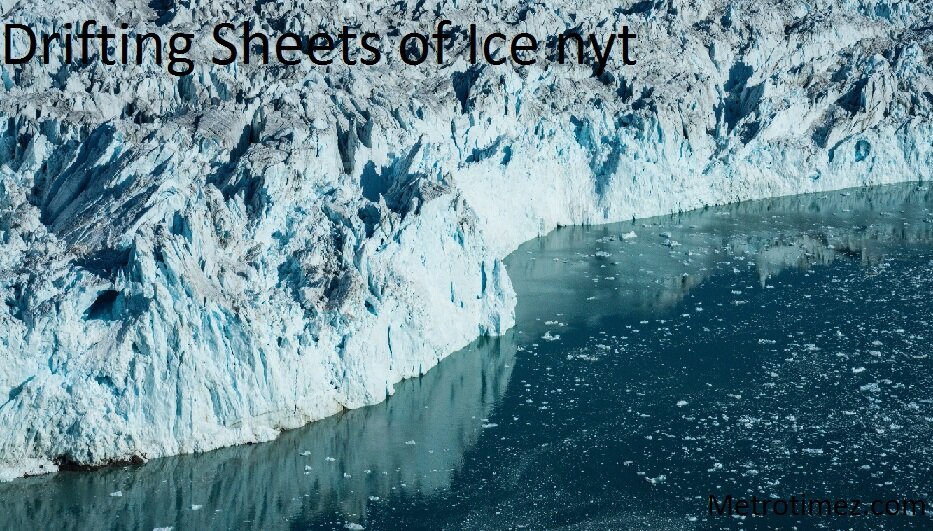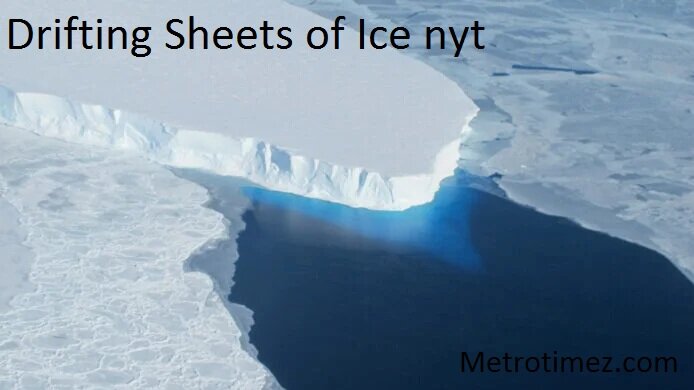
Introduction
The phenomenon of drifting sheets of ice nyt has been a topic of significant interest and concern in recent years, especially with the growing awareness of climate change. These massive ice formations, which can stretch for hundreds of miles, play a crucial role in our planet’s climate system. This article explores the science behind drifting sheets of ice nyt, their implications for global sea levels, and the latest findings from recent research.
Understanding Drifting Sheets of Ice Nyt
What Are Ice Sheets?
Ice sheets are vast expanses of ice covering land masses, primarily found in Antarctica and Greenland. Unlike icebergs, which float in the ocean, ice sheets are grounded on land. They are formed from compacted snow that accumulates over thousands of years.
The Structure of Ice Sheets
Ice sheets consist of a central dome with a gentle slope that extends outward. The ice flows slowly outward from the center due to gravity, contributing to the formation of ice shelves at the edges.
The Dynamics of Drifting Ice Sheets
Ice Flow and Movement
The movement of ice sheets is driven by a combination of internal deformation and sliding over the bedrock. This flow is affected by factors such as temperature, ice thickness, and the underlying geology.
The Role of Ice Shelves
Ice shelves, which are floating extensions of ice sheets, play a crucial role in regulating the flow of the ice sheet into the ocean. When these shelves break off or disintegrate, it can accelerate the flow of ice into the sea.
Recent Findings and Observations

Changes in Ice Sheet Dynamics
Recent studies have shown that ice sheets in both Antarctica and Greenland are experiencing accelerated melting. This acceleration is attributed to rising global temperatures and changing ocean currents.
The Impact of Climate Change
Climate change is causing significant alterations in ice sheet dynamics. Warmer temperatures lead to increased melting, while changes in precipitation patterns affect ice accumulation.
Implications for Global Sea Levels
Contribution to Sea Level Rise
Melting ice sheets contribute to global sea level rise, which poses risks to coastal communities and ecosystems. The Greenland and Antarctic ice sheets hold enough water to raise sea levels by several meters if fully melted.
Predicting Future Changes
Scientists use computer models to predict future changes in ice sheet behavior. These models take into account current observations and project future scenarios based on various climate change scenarios.
Monitoring and Research Efforts
Satellite Observations
Satellites provide valuable data on ice sheet dynamics, including changes in ice mass and flow patterns. Instruments like radar and laser altimeters help measure ice thickness and surface elevation.
Field Research
On-the-ground research involves drilling ice cores and deploying monitoring equipment to study ice sheet properties and behavior. This research provides insights into the historical climate and helps validate satellite data.
Challenges and Uncertainties
Data Gaps and Model Limitations
Despite advances in technology, there are still significant data gaps and uncertainties in predicting ice sheet behavior. Models must account for complex interactions between ice, ocean, and atmospheric processes.
Regional Variations
Drifting sheets of ice nyt dynamics can vary significantly between different regions. Understanding these variations is crucial for accurate predictions and effective climate adaptation strategies.
Future Directions
Enhanced Monitoring Techniques
Future research will likely focus on developing more advanced monitoring techniques to improve data accuracy and reduce uncertainties. This includes deploying more sophisticated sensors and expanding satellite coverage.
International Collaboration
Addressing the challenges of ice sheet dynamics and climate change requires international collaboration. Scientists from around the world work together to share data, resources, and expertise.
Conclusion
The drifting sheets of ice nyt are not just a striking natural phenomenon; they are a critical component of the Earth’s climate system with far-reaching implications. As climate change continues to impact these massive ice formations, ongoing research and monitoring will be essential for understanding and mitigating the effects on global sea levels and climate patterns.
FAQs about Drifting Sheets of Ice Nyt
- How do drifting sheets of ice nyt from icebergs?
Drifting sheets of ice nyt are large masses of ice that cover land, while icebergs are chunks of ice that break off from glaciers or ice shelves and float in the ocean.
- What factors influence the movement of drifting sheets of ice nyt?
Drifting sheets of ice nyt movement is influenced by gravity, temperature, ice thickness, and the underlying geology.
- How does melting ice contribute to sea level rise?
Melting ice sheets release water into the ocean, contributing to the overall rise in sea levels.
- What role do ice shelves play in drifting sheets of ice nyt dynamics?
Ice shelves act as barriers that slow the flow of ice from the ice sheet into the ocean. Their disintegration can accelerate ice flow and contribute to sea level rise.
- How can we improve the accuracy of drifting sheets of ice nyt models?
Improving data collection techniques, enhancing monitoring technologies, and fostering international collaboration can help increase the accuracy of ice sheet models and predictions.